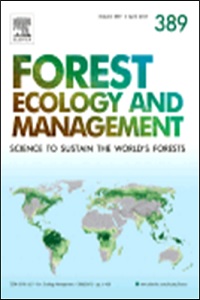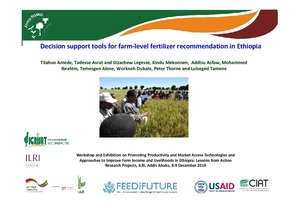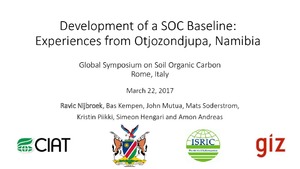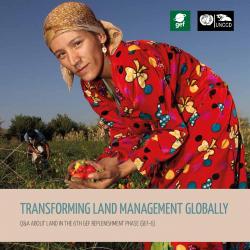Degradación de tierras
AGROVOC URI:
Changes in woody species composition following establishing exclosures on grazing lands in the lowlands of northern Ethiopia
Restoring vegetation in low rainfall areas is difficult and urges the need to design an effective and low-cost method of vegetation restoration. This study was undertaken in the lowlands of northern Ethiopia to: (1) investigate how exclosure age affects restoration of degraded native plant species richness, diversity and aboveground standing biomass, and (2) identify soil characteristics, which affect effectiveness of exclosures to restore degraded native vegetation.
Characterizing degradation of palm swamp peatlands from space and on the ground: An exploratory study in the Peruvian Amazon
Peru has the fourth largest area of peatlands in the Tropics. Its most representative land cover on peat is a Mauritia flexuosa dominated palm swamp (thereafter called dense PS), which has been under human pressure over decades due to the high demand for the M. flexuosa fruit often collected by cutting down the entire palm. Degradation of these carbon dense forests can substantially affect emissions of greenhouse gases and contribute to climate change. The first objective of this research was to assess the impact of dense PS degradation on forest structure and biomass carbon stocks.
Constraints on agricultural production in the northern uplands of Vietnam
The Northern Uplands of Vietnam form one of the largest ecological regions in the country, characterized by complex biophysical conditions and a high diversity in ethnic minorities, cultures, and farming systems. The Doi moi ("renovation?) program has, since the early 1980s, resulted in significant changes in agriculture production and related economic trends. However, poverty, low agricultural productivity, and land degradation are still major problems.
CPWF what is a benefit sharing mechanism
Decision support tools for farm-level fertilizer recommendation in Ethiopia
Developing rainwater management strategies through integration of technologies, institutions and policies for Blue Nile Basin, Ethiopia.
Development of a SOC Baseline: Experiences from Otjozondjupa, Namibia.
Transforming Land Management Globally
Responding to the immediate challenge of how we sustainably intensify the production of food, fuel and fiber to meet future demand without the further degradation of our finite land resource base, Land Degradation Neutrality (LDN), which emerged from the UN Conference on Sustainable Development (Rio+20) in 2012, is a potential target to address this challenge.
Achieving Land Degradation Neutrality at the country level
The twelfth session of the Conference of the Parties of the UNCCD (COP 12) agreed to integrate the sustainable development goals (SDGs) and target 15.3 on Land Degradation Neutrality (LDN) in particular, into the implementation of the Convention, stating







